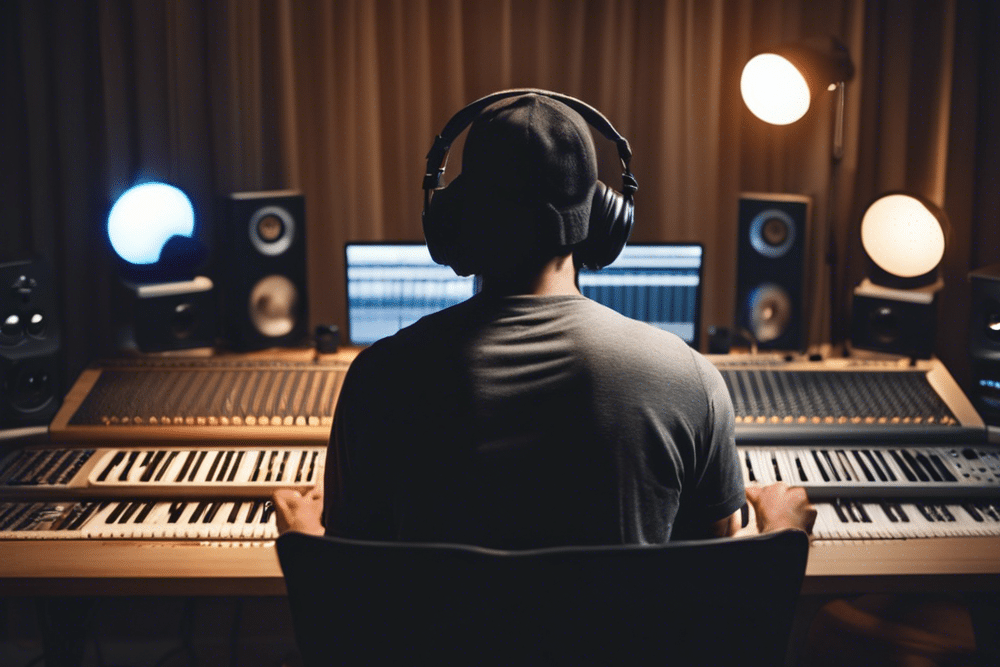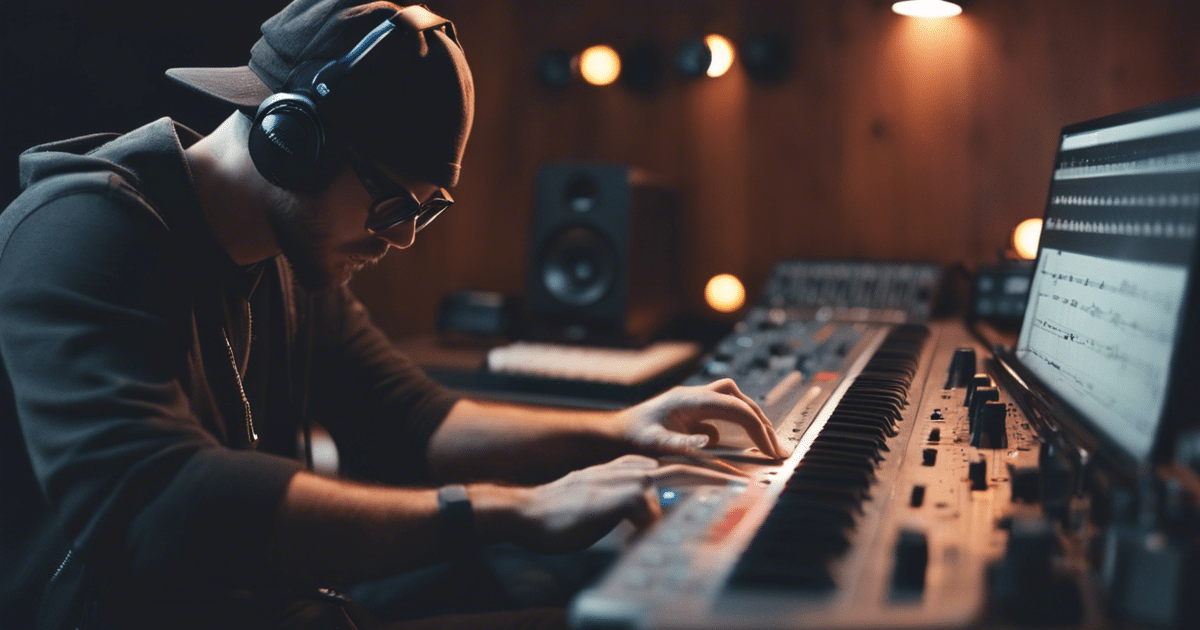Estimated reading time: 9 minutes
Introduction: Unleashing Your Creative Potential
Are you ready to take your music production skills to the next level? Look no further than Ableton Live 11, a powerful tool that has revolutionized the way musicians and producers create, record, and perform music. In this comprehensive guide, we’ll explore how to use Ableton Live 11, covering everything from the basics to advanced techniques that will help you craft your unique sound.
Ableton Live 11 is more than just a digital audio workstation (DAW); it’s a creative playground that offers endless possibilities for music makers. Whether you’re a beginner just starting your journey in music production or an experienced producer looking to expand your skills, this guide will help you navigate the ins and outs of this versatile software.
Table of contents
- Introduction: Unleashing Your Creative Potential
- Getting Started with Ableton Live 11
- Creating Your First Track
- Exploring Ableton Live 11’s Essential Features
- Advanced Techniques in Ableton Live 11
- Mixing and Mastering in Ableton Live 11
- Creative Techniques and Workflow Tips
- Collaboration and Performance Features
- Video: Ableton Live 11 – Tutorial for Beginners in 12 MINUTES!
- Conclusion: Your Journey with Ableton Live 11
- FAQs
Getting Started with Ableton Live 11
Setting Up Your Workspace
Before diving into the creative process, it’s essential to set up your workspace correctly. Here’s how to get started:
- Install Ableton Live 11 on your computer.
- Connect your audio interface and configure your audio input and output devices in Ableton’s preferences.
- Set up your MIDI controllers if you plan to use any.
- Familiarize yourself with the two main views in Ableton: Session View and Arrangement View.
Understanding the Interface
Ableton Live 11’s interface might seem overwhelming at first, but it’s designed to be intuitive and user-friendly. Let’s break down the main components:
- Browser: Located on the left side, this is where you’ll find all your instruments, samples, and plugins.
- Session View: This grid-like view is perfect for live performances and experimenting with ideas.
- Arrangement View: Here’s where you’ll arrange and finalize your tracks in a linear timeline.
- Device View: This area displays the instruments and effects on the selected track.
- Mixer: Located at the bottom, this is where you’ll adjust levels, panning, and sends for each track.
Creating Your First Track
Types of Tracks in Ableton Live 11
Ableton Live 11 offers various types of tracks to suit different needs:
- Audio Tracks: For recording and playing back audio clips.
- MIDI Tracks: For working with virtual instruments and MIDI data.
- Return Tracks: Used for creating effect sends.
- Group Tracks: For organizing and processing multiple tracks together.
Adding Instruments and Samples
To start creating music, you’ll need to add instruments or samples to your project. Here’s how:
- Drag and drop an instrument from the browser onto a MIDI track.
- Explore Ableton’s built-in instruments like Operator, Wavetable, or Simpler.
- Load samples from Ableton’s library or your own collection into an audio track.
Recording MIDI and Audio
Recording in Ableton Live 11 is straightforward:
- Arm the track you want to record on by clicking the record arm button.
- Set your input source (microphone for audio, MIDI controller for MIDI).
- Click the global record button or use the shortcut (F9) to start recording.
Pro Tip: Use Ableton’s Capture MIDI feature to retroactively capture your MIDI performances, even if you weren’t recording!
Exploring Ableton Live 11’s Essential Features
Warping and Time Stretching
One of Ableton Live’s standout features is its powerful warping capabilities. This allows you to change the tempo of audio without affecting its pitch. Here’s how to use it:
- Double-click an audio clip to open it in the clip view.
- Enable warping by clicking the “Warp” button.
- Experiment with different warp modes to find the best sound for your material.
Using Effects and Devices
Ableton Live 11 comes with a wide range of built-in audio effects and devices. Here’s how to use them:
- Drag an effect from the browser onto a track or into a device chain.
- Adjust the parameters to shape your sound.
- Try combining multiple effects to create unique textures.
Some essential effects to explore include:
- EQ Eight: For precise frequency adjustments
- Compressor: To control dynamics
- Reverb: To add space and depth to your sounds
- Delay: For creating echoes and rhythmic effects (You think reverb and delay are the same thing? In our article Reverb vs Delay we go into the differences between reverb and delay.)
Working with Clips and Scenes
In Session View, you can create and launch clips to build your tracks:
- Record or drag audio or MIDI into empty clip slots.
- Use the clip launch buttons to play clips individually or as part of a scene.
- Experiment with different clip launch quantization settings for tight timing.

Advanced Techniques in Ableton Live 11
Automation and Modulation
Bring your tracks to life with automation and modulation:
- Enter Automation Mode by pressing “A” on your keyboard.
- Draw in automation curves for various parameters.
- Use Ableton’s powerful modulation capabilities to create evolving sounds.
Sampling and Resampling
Ableton Live 11 excels at sampling and resampling techniques:
- Use the Simpler or Sampler instruments to work with one-shot samples.
- Create complex layered sounds using Drum Rack.
- Resample your processed audio for further manipulation.
Utilizing Max for Live
Max for Live opens up a world of possibilities for custom devices and workflows:
- Explore the Max for Live browser category for unique devices.
- Use Max for Live to create your own custom instruments and effects.
- Integrate Max for Live devices into your projects for advanced sound design.
Mixing and Mastering in Ableton Live 11
EQ and Frequency Balance
Achieving a balanced mix starts with proper EQ:
- Use EQ Eight to carve out space for each element in your mix.
- Pay attention to frequency masking between different instruments.
- Use the Spectrum analyzer to visualize your frequency content.
Dynamics Processing
Control the dynamics of your tracks for a polished sound:
- Use compressors to even out volume levels and add character.
- Experiment with Ableton’s Glue Compressor on busses for cohesion.
- Apply limiting on your master channel for final loudness.
Spatial Effects
Create depth and width in your mix with spatial effects:
- Use the Ping Pong Delay for stereo width.
- Experiment with Ableton’s Hybrid Reverb for realistic or creative spaces.
- Try the Utility device for stereo manipulation.

Creative Techniques and Workflow Tips
Sound Design with Operator and Wavetable
Ableton Live 11’s synths are powerful tools for sound design:
- Use Operator’s FM synthesis for complex, evolving textures.
- Explore Wavetable’s modulation capabilities for unique leads and pads.
- Layer multiple synths for rich, full sounds.
Using Follow Actions for Generative Music
Create evolving compositions with Follow Actions:
- Set up clips with different Follow Action behaviors.
- Experiment with random and sequential Follow Actions.
- Use Follow Actions to create generative ambient textures.
Exploring Ableton’s Groove Pool
Add human feel to your MIDI and audio:
- Access the Groove Pool from the browser.
- Apply grooves to MIDI clips or audio to add swing and feel.
- Extract grooves from your own recordings to capture your unique rhythmic style.
Collaboration and Performance Features
Ableton Link
Sync your projects with other musicians:
- Enable Ableton Link in the Link/MIDI preferences.
- Connect with other Link-enabled devices on the same network.
- Jam together with perfect synchronization.
Live Performance Techniques
Prepare your set for live performance:
- Organize your Session View with scenes for different parts of your set.
- Use Follow Actions for automated clip launching.
- Map MIDI controllers for hands-on control during performance.
Video: Ableton Live 11 – Tutorial for Beginners in 12 MINUTES!
Conclusion: Your Journey with Ableton Live 11
Mastering Ableton Live 11 is an ongoing journey of exploration and creativity. We’ve covered the fundamentals of music making with this powerful tool, from setting up your workspace to advanced mixing techniques and creative sound design. Remember, the key to becoming proficient with Ableton Live 11 is practice and experimentation.
As you continue to explore the software, don’t be afraid to push boundaries and try new things. Ableton Live 11 is designed to be a flexible and intuitive creative tool, capable of bringing your musical ideas to life in ways you might not have imagined.
Whether you’re crafting beats, producing electronic music, or recording live instruments, Ableton Live 11 offers a comprehensive suite of features to support your creative vision. Keep exploring the vast library of instruments, effects, and Max for Live devices to expand your sonic palette.
Remember to take advantage of Ableton’s extensive documentation and online resources. The Ableton community is vast and supportive, offering tutorials, forums, and user groups where you can share ideas and learn from others.
As you grow more comfortable with the software, you’ll discover your own workflows and techniques that suit your unique style. Ableton Live 11 is not just a DAW; it’s an instrument in its own right, capable of inspiring new ideas and helping you realize your musical ambitions.
So, dive in, experiment, and most importantly, have fun! Your journey with Ableton Live 11 is just beginning, and the possibilities are truly endless. Happy music making!
Related Posts
FAQs
Ableton Live 11 offers an intuitive interface, powerful warping capabilities, and unique features like Session View for live performances and experimentation. It’s versatile for both studio production and live performance, making it a go-to for many producers and musicians.
Start by installing the software and connecting your audio interface. Configure audio and MIDI settings in Preferences. Familiarize yourself with Session View for live performances and Arrangement View for track editing to streamline your workflow.
Key features include warping for tempo flexibility, a wide range of built-in effects like EQ Eight and Compressor, and devices for sound manipulation. The software also supports advanced techniques like automation, modulation, and integration with Max for Live.
Focus on EQ and frequency balance using EQ Eight to create space for each track. Use dynamics processing tools like compressors and limiters to control volume. Spatial effects like Reverb and Delay can add depth and stereo width to your mix.
Use Operator and Wavetable for complex sound design, experiment with Follow Actions for generative music, and utilize the Groove Pool to add human feel to your tracks. Max for Live allows for custom instruments and unique sound manipulation techniques.
